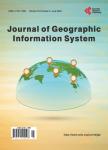Incidence of Violence Risk Mapping Using GIS: A Case Study of Pakistan
Incidence of Violence Risk Mapping Using GIS: A Case Study of Pakistan作者机构:Institute of Geo-Information and Earth Observations PMAS Arid Agriculture University Rawalpindi Pakistan
出 版 物:《Journal of Geographic Information System》 (地理信息系统(英文))
年 卷 期:2017年第9卷第6期
页 面:623-636页
学科分类:1002[医学-临床医学] 100214[医学-肿瘤学] 10[医学]
主 题:GIS Incidence of Violence Risk Map Getis-Ord-Gi* Kernel Density Indexing PIPS Pakistan
摘 要:Violence comes first by which human lives are being destroyed. Violence poses serious challenges to law enforcement agencies and policy makers as well as it threatens the writ of the Government. Violence condition of a country can be visualized through an accurate violence risk map. This paper presents the methodology to develop an incidence of violence (IOV) risk map using GIS. IOV data for year 2010 was collected from Pakistan Institute for Peace Studies (PIPS) that have 3104 records and cover 16 categories of attack types. IOV data was further geocoded by using online Google geocoding service. IOV risk maps were developed through two available methods: kernel density and getis-ord-gi* by giving single parameter “frequency, and one new indexing method by giving two additional parameters as well “severity and “probability. For each district, IOV frequency and IOV severity values were calculated from PIPS data whereas IOV probability value was derived from the Benazir Income Support Program—Poverty Scorecard Survey (BISP—PSS). A value ranging from 1 to 5 was assigned to each of three parameters against each district and then all three parameters were multiplied with each other to generate IOV risk index that had values ranging from 1 to 125. IOV risk index was further classified through natural breaks into three categories: low risk (1 - 40), moderate risk (41 - 70) and high risk (71 - 125). For validation purpose, spatial overlay analysis was conducted between year 2011 IOV data (classified through natural breaks) and year 2010 IOV risk maps (developed through kernel density, getis-ord-gi* and indexing method). The indexing method has proved as a reliable method to develop an IOV risk map with an accuracy of 93 percent then getis-ord-gi* and kernel density having accuracy of 58 percent and 89 percent respectively. Furthermore, indexing method predicted IOV risk areas more efficiently in terms of spatial distribution. Indexing method highlighted Khuzdar, Zhob, Up



